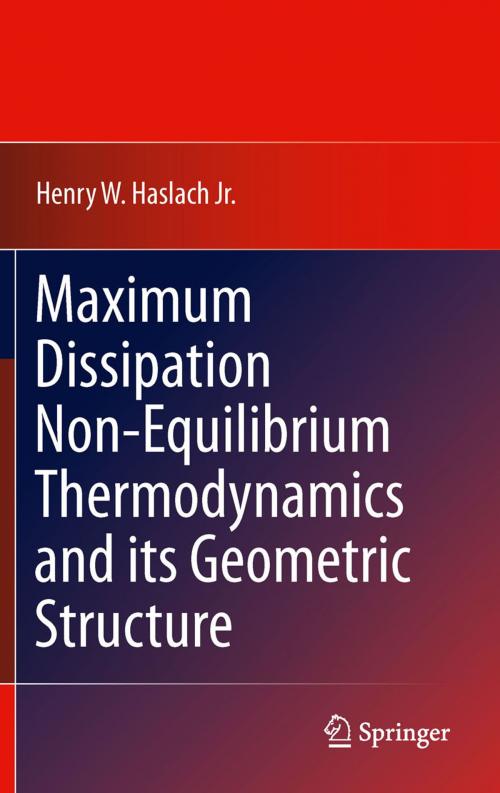Maximum Dissipation Non-Equilibrium Thermodynamics and its Geometric Structure
Nonfiction, Science & Nature, Science, Physics, Thermodynamics, Technology, Material Science| Author: | Henry W. Haslach Jr. | ISBN: | 9781441977656 |
| Publisher: | Springer New York | Publication: | January 15, 2011 |
| Imprint: | Springer | Language: | English |
| Author: | Henry W. Haslach Jr. |
| ISBN: | 9781441977656 |
| Publisher: | Springer New York |
| Publication: | January 15, 2011 |
| Imprint: | Springer |
| Language: | English |
Maximum Dissipation: Non-Equilibrium Thermodynamics and its Geometric Structure explores the thermodynamics of non-equilibrium processes in materials. The book develops a general technique created in order to construct nonlinear evolution equations describing non-equilibrium processes, while also developing a geometric context for non-equilibrium thermodynamics. Solid materials are the main focus in this volume, but the construction is shown to also apply to fluids. This volume also: • Explains the theory behind thermodynamically-consistent construction of non-linear evolution equations for non-equilibrium processes • Provides a geometric setting for non-equilibrium thermodynamics through several standard models, which are defined as maximum dissipation processes • Emphasizes applications to the time-dependent modeling of soft biological tissue Maximum Dissipation: Non-Equilibrium Thermodynamics and its Geometric Structure will be valuable for researchers, engineers and graduate students in non-equilibrium thermodynamics and the mathematical modeling of material behavior.
Maximum Dissipation: Non-Equilibrium Thermodynamics and its Geometric Structure explores the thermodynamics of non-equilibrium processes in materials. The book develops a general technique created in order to construct nonlinear evolution equations describing non-equilibrium processes, while also developing a geometric context for non-equilibrium thermodynamics. Solid materials are the main focus in this volume, but the construction is shown to also apply to fluids. This volume also: • Explains the theory behind thermodynamically-consistent construction of non-linear evolution equations for non-equilibrium processes • Provides a geometric setting for non-equilibrium thermodynamics through several standard models, which are defined as maximum dissipation processes • Emphasizes applications to the time-dependent modeling of soft biological tissue Maximum Dissipation: Non-Equilibrium Thermodynamics and its Geometric Structure will be valuable for researchers, engineers and graduate students in non-equilibrium thermodynamics and the mathematical modeling of material behavior.















